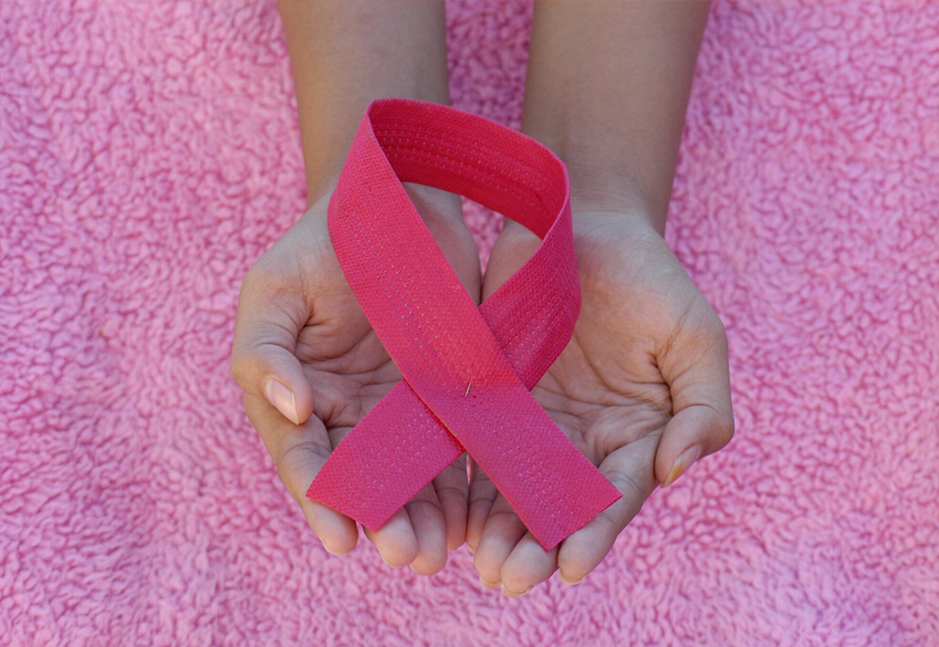
Breast Cancer Myths vs. Facts
nless people experience breast cancer in their own lives, or they’re close to someone who does, they might not be able to separate myth from fact when it comes to this disease: who gets it and why, for example, or what treatment involves. True, breast cancer is one of the better-known and more-talked-about cancers, but there are still so many misconceptions out there.
Here at Breastcancer.org, we run into some of the same myths year after year. Many of them are included in the list below. We also polled our online Community to ask them what they find to be the most persistent myths about breast cancer that need correcting. In fact, many of our respondents admitted that they too bought into these myths until their own diagnosis!
MYTH: If I don’t have a family history of breast cancer, I won’t get it. FACT: Most people diagnosed with breast cancer have no known family history.
Many people think of breast cancer as an inherited disease. But only about 5–10% of breast cancers are believed to be hereditary, meaning they’re caused by abnormal changes (or mutations) in certain genes passed from parent to child.1 The vast majority of people who get breast cancer have no family history, suggesting that other factors must be at work, such as environment and lifestyle.
But doctors often can’t explain why one person gets breast cancer and another doesn’t. The biggest risk factors are simply being a woman and growing older. Over time, healthy breast cells can develop mutations on their own, eventually turning into cancer cells.
Still, if you have a strong family history of breast cancer on either your mother’s or your father’s side, this is an important risk factor that should be taken seriously. If there are one or more cases of breast cancer in close blood relatives, especially before age 50, and/or other cancers such as ovarian and prostate cancer in your family, share this information with your doctor.
MYTH: If you maintain a healthy weight, exercise regularly, eat healthy, and limit alcohol, you don’t have to worry about breast cancer. FACT: Although these behaviors can help lower breast cancer risk, they can’t eliminate it.
It’s something we hear again and again from newly diagnosed women: “I eat healthy, I’m at a healthy weight, I’m active, and I barely drink. So how did I end up with breast cancer?” Yes, there is evidence that all of these behaviors can help lower your risk. However, they can’t guarantee you’ll never get the disease. There are so many examples of people who do everything right and still get breast cancer.
It’s certainly worth managing the risk factors you can control, such as what you eat and drink and how physically active you are. But it’s still important to get regular screenings, perform breast self-exams, and pay attention to any unusual changes in your breasts. And if you have any “health-nut” friends or relatives who think there’s no way they’d ever get breast cancer, help them understand that no one is 100% safe.
Community member Beesie says: “I think the heavy focus on lifestyle and environmental factors can be misleading since most breast cancers are caused by factors outside of our control.”
“There’s a myth that it’s your fault,” adds Community member Illimae. “It is not your fault, there is risk with everything in life, don’t beat yourself up.”
MYTH: Wearing a bra can cause breast cancer. FACT: There is no evidence that bras cause breast cancer.
From time to time, media coverage and the internet have fueled myths that wearing a bra can increase breast cancer risk.
The theory was that wearing a bra — especially an underwire style — could restrict the flow of lymph fluid out of the breast, causing toxic substances to build up in the tissue.
However, there is no evidence to support this claim. A 2014 study of roughly 1,500 women with breast cancer found no link between bra-wearing and breast cancer.
MYTH: Using underarm antiperspirant can cause breast cancer. FACT: There is no evidence of a connection between underarm antiperspirant and breast cancer, but the safety of antiperspirants is still being studied.
There have been persistent rumors that underarm antiperspirants, especially those containing aluminum and other chemicals, are absorbed into the lymph nodes and make their way into breast cells, increasing cancer risk. Shaving the underarms was thought to make this worse by creating tiny nicks that allow more of the chemicals to enter the body. Another theory was that antiperspirants, by stopping underarm sweating, can prevent the release of toxic substances from the underarm lymph nodes, also increasing cancer risk.
However, there is no evidence of a link between antiperspirant use and breast cancer. Still, some studies have found that women who use aluminum products under their arms are more likely to have higher concentrations of aluminum in breast tissue.2 If you’re concerned about minimizing the use of chemicals under your arms, check out these tips in Are Antiperspirants Safe?
MYTH: Carrying your cell phone in your bra can cause breast cancer. FACT: There is no evidence of a connection between cell phones and breast cancer, but the safety of cell phones is still being studied.
Media reports have raised concerns that carrying a cell phone in your bra might increase breast cancer risk. There have been some cases of younger women developing breast cancer after habitually carrying their cell phones in their bras. In 2013, the Dr. Oz Show further fueled these concerns by warning women never to carry their cell phones in their bras.
The research simply isn’t there to support this claim, though. To date, most studies have focused on whether the radiofrequency radiation given off by cell phones can increase the risk of brain tumors. (This is low-energy radiation, unlike the high-energy radiation used by X-rays, for example.) This research hasn’t found a link, but the issue is still being studied.
Still, cell phone manufacturers often do recommend keeping your device away from your body as much as possible. Although there is no proven breast cancer link, you may wish to avoid wearing your cellphone in your bra or chest pocket until more research is available.
MYTH: Consuming too much sugar causes breast cancer. FACT: There is no evidence that sugar in the diet causes breast cancer.
Not just with breast cancer but with all types of cancer, there’s a common myth that sugar can feed the cancer and speed up its growth. All cells, whether cancerous or healthy, use the sugar in the blood (called glucose) as fuel. While it’s true that cancer cells consume sugar more quickly than normal cells, there isn’t any evidence that excessive sugar consumption causes cancer.
There was a study in mice that suggested excess sugar consumption might raise the risk of breast cancer,3 but more research is needed to establish any link in animals as well as in people.
That said, we do know that eating too much sugar can lead to weight gain, and being overweight is an established risk factor for breast cancer. In addition, some studies have linked diabetes with a higher risk of breast cancer — especially more aggressive, later-stage cancers. Researchers aren’t sure if the link is due to that fact that people with diabetes tend to be overweight, or that they have higher blood sugar levels.
For health reasons, it’s always a good idea to cut down on desserts, candy, cakes, sweetened beverages, and processed foods that contain sugar. Reading labels is important, as many foods can have “hidden” added sugars like high-fructose corn syrup.
MYTH: Annual mammograms guarantee that breast cancer will be found early. FACT: Although mammography is the best early-detection tool we have, it doesn’t always find breast cancer at an early stage.
It’s certainly normal to breathe a sigh of relief any time your mammogram comes back clean. Most women think, “I’m good for another year” and put breast cancer out of their minds.
Although mammography is a very good screening tool, it isn’t foolproof. It can return a false-negative result, meaning that the images look normal even though cancer is present. It’s estimated that mammograms miss about 20% of breast cancers at the time of screening.4 False-negative results tend to be more common in women who have dense breast tissue, which is made up of more glandular and connective tissue than fatty tissue. Younger women are more likely to have dense breasts.
The reality of false negatives explains why a woman can have a normal mammogram result and then get diagnosed with breast cancer a few months later. Some women can have a series of normal mammograms and still be diagnosed with advanced breast cancer. Also, there are cases where breast cancer develops and grows quickly in the year or so after a true negative mammogram.
Mammography does catch most breast cancers, though, and that’s why regular screenings are essential. But it’s also important to pay attention to any changes in your breasts, perform monthly breast self-exams, and have a physical examination of your breasts by a health professional every year.
Community member Rah2464 shares her experience: “I think it is truly important to educate everyone that it takes imaging, self-exam, and perhaps self-awareness of symptoms to catch this disease as early as possible. I really blindly felt that as long as I went to my yearly mammogram appointments followed by consult and exam with my doctor, that I was fine. Imaging wound up failing me, but my intuition about myself and how I felt helped me get diagnosed. If I had relied just on a mammogram/ultrasound I think I would have had a much different prognosis.”
Bgirl shares that she has had breast cancer twice, but imaging only caught it once: “Mammograms are a great screening tool and found my first breast cancer at 46. The second one, not so much. There were no lumps either time: the first one was deep and the second was behind a nipple. With the second one, I found a lymph node that was growing.”
SimoneRC did have a lump that led to further testing, even though her mammogram was clear: “Mammograms do not catch everything. The day of my ultrasound/core biopsy my 3D mammogram was completely clear.”
MYTH: Breast cancer always causes a lump you can feel. FACT: Breast cancer might not cause a lump, especially when it first develops.
People are sometimes under the impression that breast cancer always causes a lump that can be felt during a self-exam. They might use this as a reason to skip mammograms, thinking they’ll be able to feel any change that might indicate a problem. However, breast cancer doesn’t always cause a lump. By the time it does, the cancer might have already moved beyond the breast into the lymph nodes. Although performing breast self-exams is certainly a good idea, it isn’t a substitute for regular screening with mammography.
There are some other myths about what types of breast lumps are less worrisome, such as: “If the lump is painful, it isn’t breast cancer,” and “If you can feel a lump that is smooth, and/or that moves around freely under the skin, it’s not breast cancer.” Any lump or unusual mass that can be felt through the skin needs to be checked out by a healthcare professional. Although most lumps are benign (not cancer), there is always the possibility of breast cancer.
As Community member Simone RC says, “[There is a myth] that you only need to worry if your lump is hard, not movable, and not smooth. Every single doctor who felt my always-lumpy breasts said they never would have thought what I felt was suspicious. I noticed the new lump on one of my best old lumps. Smooth, movable, soft, like a grape cut in half lengthwise. Thank goodness my gynecologist took me seriously despite having my annual 3D mammogram completely clear a few months before.”





